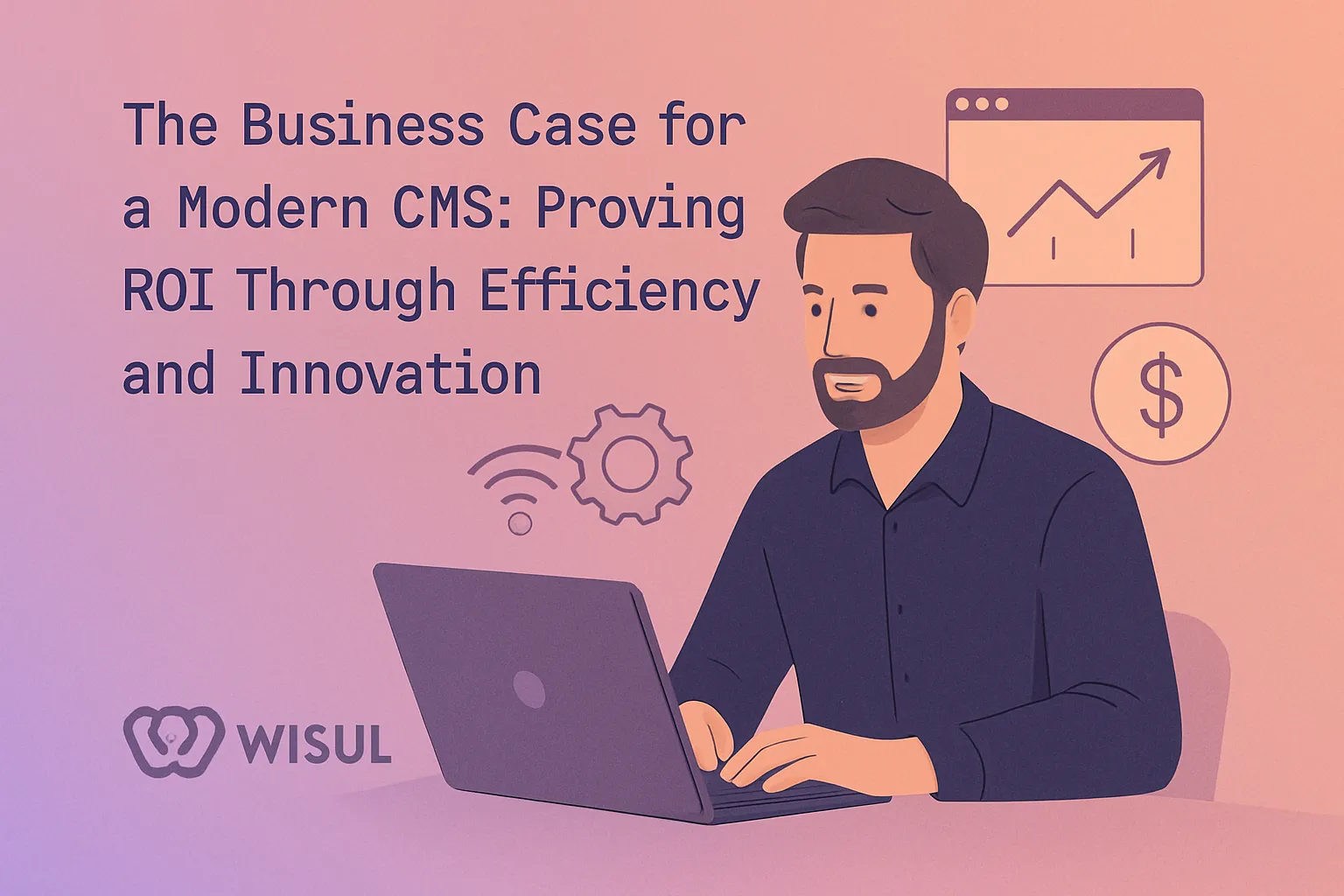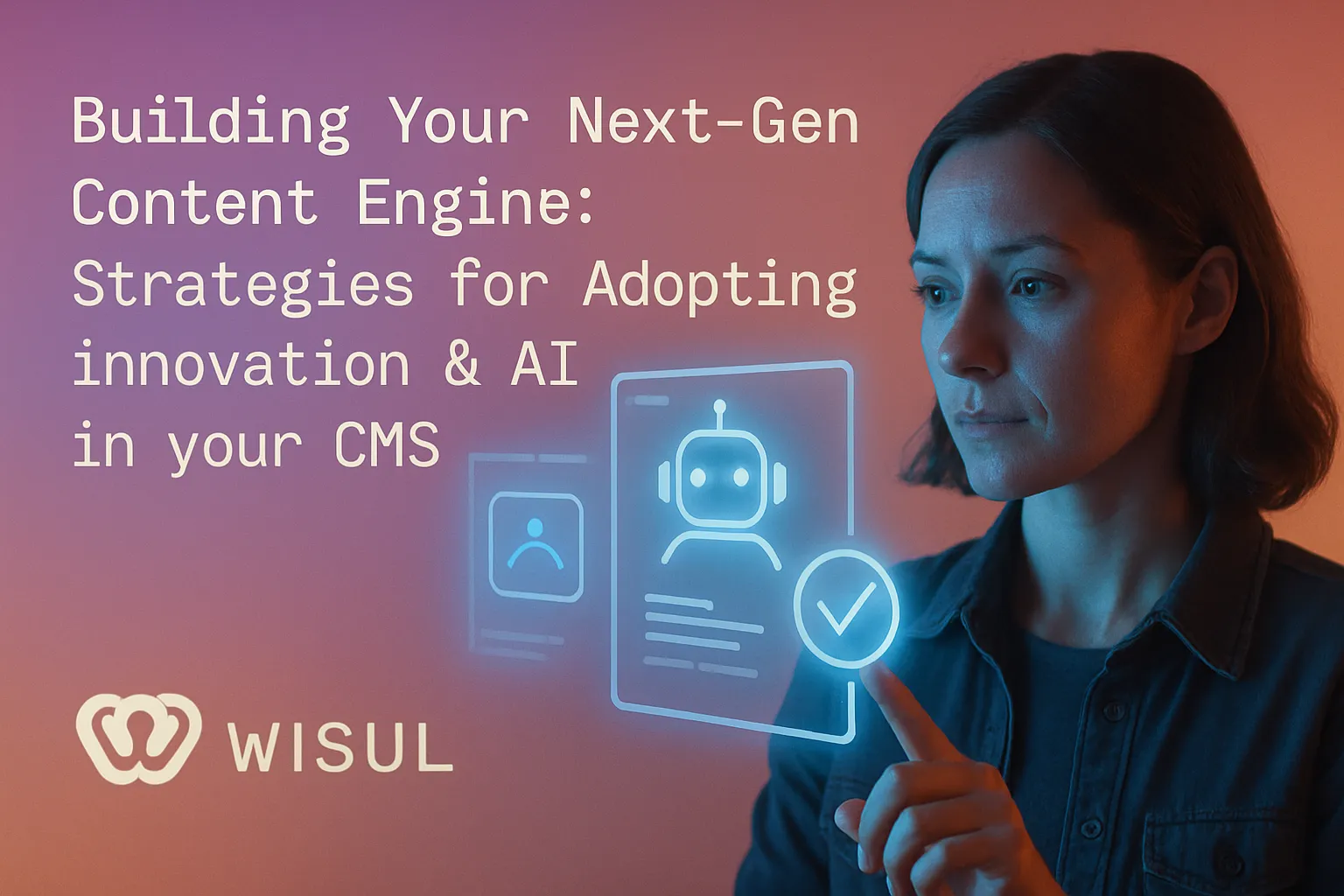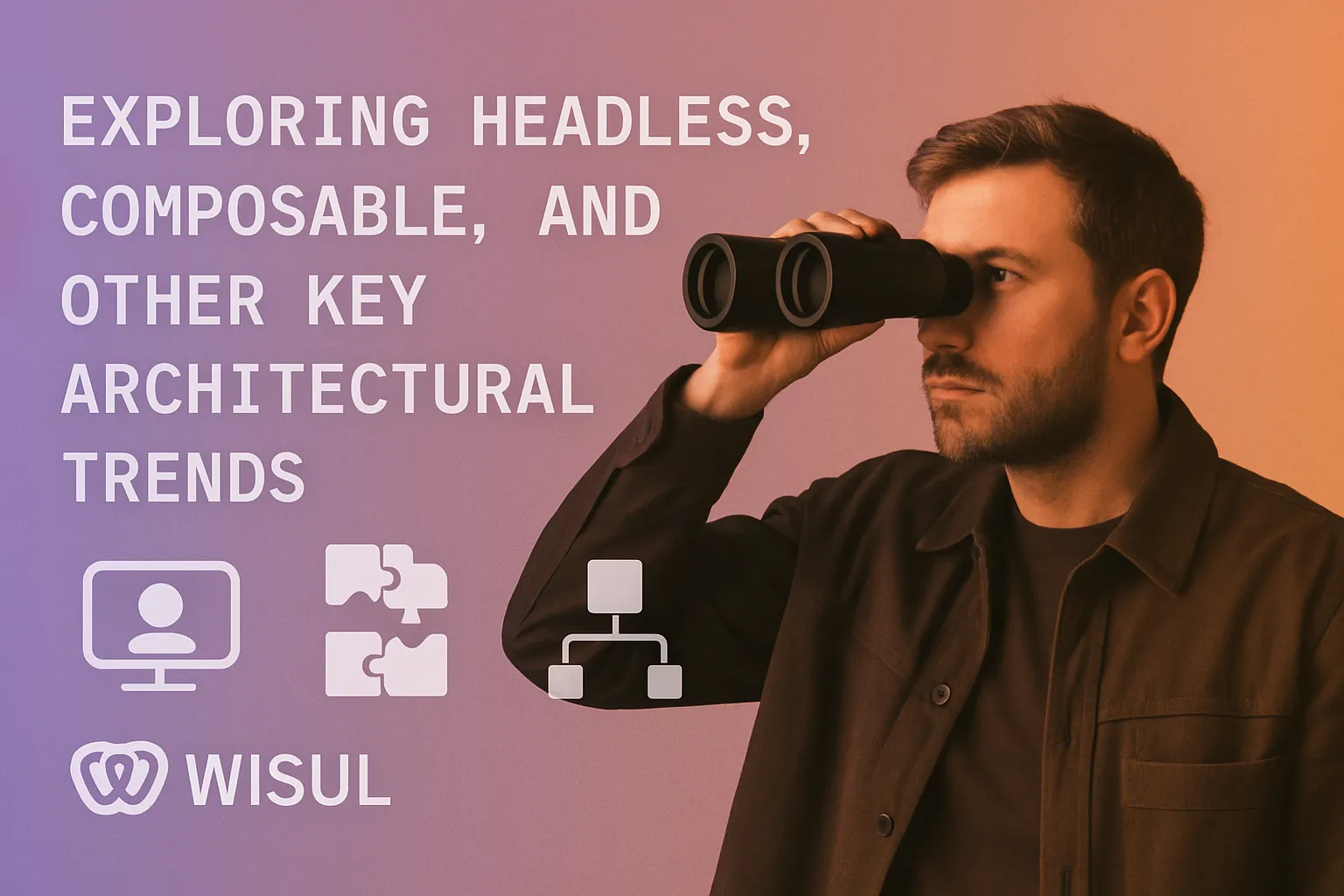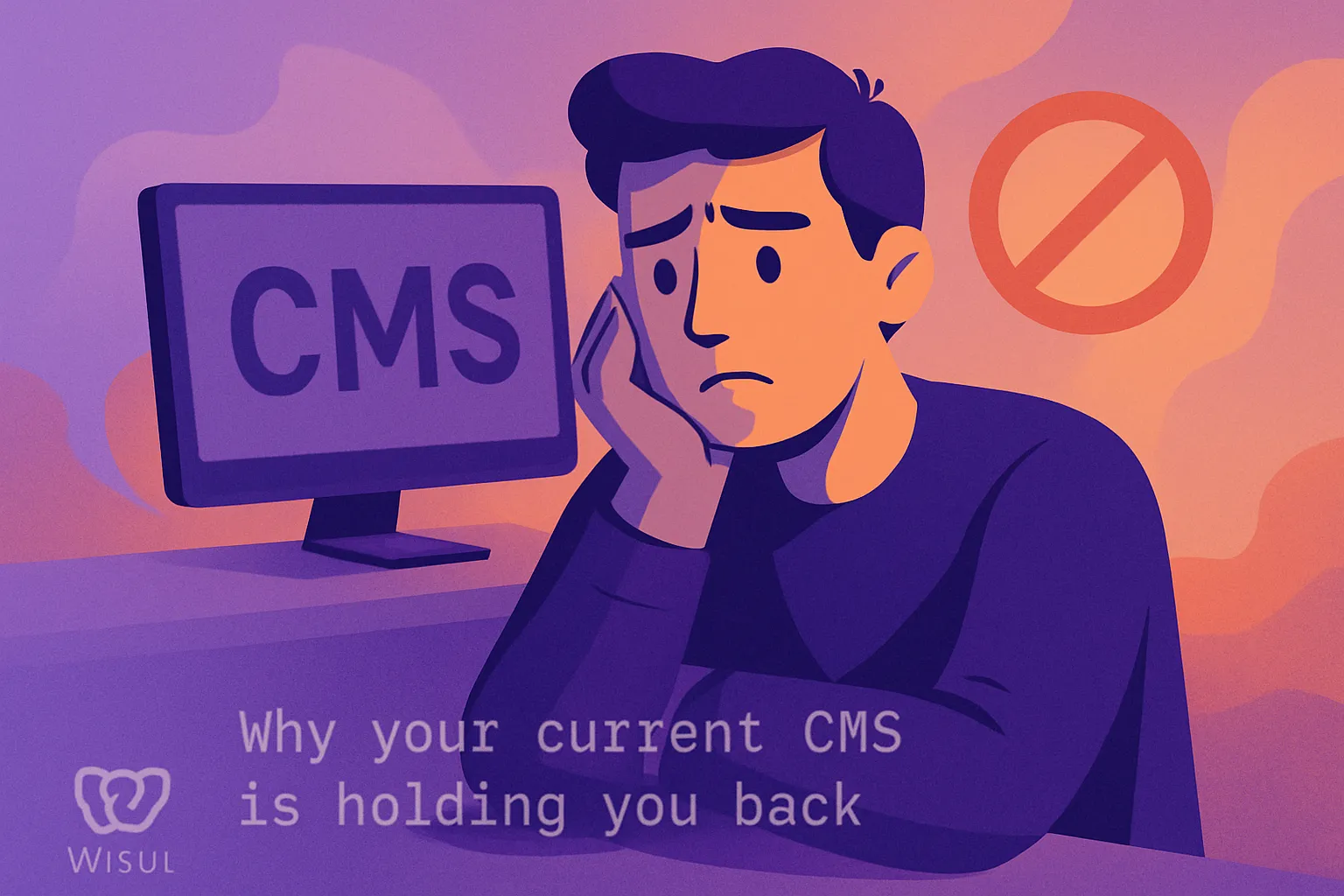- Key Takeaways
- What Defines a Modern CMS?
- How to Prove Modern CMS ROI
- Unlocking ROI Through Efficiency
- The Hidden Costs of Inaction
- Selecting the Right Platform
- Conclusion
- Frequently Asked Questions
Key Takeaways
- Modern cms differentiate themselves from older solutions with easy to use interfaces, robust support of various content types, and scalability as your business grows.
- By adopting headless architecture and composable technology stacks, organizations can deliver content with adaptability and efficiency across multiple digital platforms while reducing technological constraints.
- By incorporating AI into a CMS, you can provide customized content, better analytics, and optimized workflows for more effective user interaction and system performance.
- To prove the ROI of a modern CMS, you need clear metrics, an emphasis on total cost of ownership reduction, operational efficiency gains, and measurable revenue growth related to improved content experiences.
- To procrastinate on CMS modernization is to ferment technical debt, security concerns and lost innovation opportunities — the trifecta that impacts competitiveness and business growth.
- The right CMS for you will be based on your unique business needs, technical considerations, your team’s skill set, and a willingness to support and maintain for the future.
A modern cms is something that allows users to create, edit, and publish web content easily. It operates on straightforward dashboards, rapid updates, and plugins for specific requirements.
Most teams use it to reduce time on site and stay current. It suits a lot of different kinds of sites, from tiny blogs to large corporate sites.
So what sets these things apart, read on and find out.
What Defines a Modern CMS?

Modern CMS differentiate themselves from legacy platforms by prioritizing flexibility, scalability, and multifaceted content support. At a bare minimum, modern CMS allow organizations to deliver rich consistent digital experiences across channels.
Key features include:
- Intuitive, user-friendly interfaces designed for non-technical users
- Scalability to handle growing data and traffic
- Flexible support for multiple content types and formats
- Seamless integration with third-party services and APIs
- Decoupled content delivery for multi-channel distribution
- Advanced analytics and automation powered by AI
Beyond Pages
Static, page-based sites are phased out. Dynamic content is the forte of modern CMSs. Pages now source data from structured sources, not just static files.
Multimedia—video, audio, interactive stuff—is simple to embed and administer, assisting in capturing site visitors. That is, user generated content counts. Forums, comments and social integrations allow audiences to shape the site.
With responsive design smarts, modern CMS tools adjust layouts for mobile, tablet, or desktop, so visitors receive a consistently fluid browsing experience.
Headless Architecture
Headless architecture separates backend content management from frontend presentation layer. This enables developers to use any frontend framework or language.
API-driven means content reuse across mobile, web, and IoT is a breeze. It also supports omnichannel publishing and personalized app experiences.
Decoupling frontend and backend lets designers and developers work without getting in each other’s way. APIs distribute content to any device, from mobile phones to kiosks. Headless CMS is great for global brands that need to serve the same content in many places.
Composable Stacks
Composable stacks means you choose the optimal tool for each task, not just what’s included. This allows teams to unify content storage, search, analytics and workflows across vendors.
You can customize the CMS to suit unique business requirements. As new tools are released, they’re simple to add or switch. Such a modular setup can accelerate site performance and increase reliability.
AI Integration
AI integration includes personalized recommendations for site visitors, automated tagging and content classification, predictive analytics to guide editorial strategy, and workflow automation for faster publishing.
AI tools could identify trends and recommend actions. They assist teams in making smarter decisions, engaging more users, and eliminating grunt work.
How to Prove Modern CMS ROI

ROI for a modern CMS platform is about how effectively the platform helps a business achieve its goals while managing costs. This ROI is connected to specific business objectives such as increasing revenue, reducing expenses, and enhancing customer loyalty through powerful content management capabilities. To prove ROI, select obvious metrics, correlate CMS capabilities to financial objectives, and involve all stakeholders — such as IT, marketing, and finance — in the evaluation.
1. Calculate TCO Reduction
TCO for CMS means any costs related to owning and operating the system, not just the initial cost. From setup to support, to training, to upgrades and integration. Modern CMS helps slash these costs by making updates more efficient, automating tasks, and turning manual work into 1-click processes.
Less is more – Using less of everything translates into fewer errors and smarter allocation of personnel. There can be as much as $100,000 in annual savings when a CMS integrates with other tools. The basic formula for TCO: sum of all direct and indirect costs over the system’s lifetime.
2. Measure Operational Efficiency
Operational efficiency refers to the extent to which the CMS enables teams to accomplish more with less time and resources. Primary KPIs are time on content, errors and publishing speed. Modern CMS can reduce content work by 50% or more, with faster site edits possible.
These efficiencies increase productivity and keep teams on more high-impact projects. Continue to follow these metrics to ensure the CMS continues meeting business needs.
3. Quantify Revenue Lifts
Revenue gains are frequently connected to improved digital experiences and accelerated site loads. A one second drop in page load time, for instance, can increase conversion rates by 7%. Personalized content can cause a 20-50% increase in qualified leads and increased retention that increases profit by as much as 95%.
Other agile marketing firms with a modern CMS see project success rates increase by 40%. These improvements are reflected in increased revenues, reduced advertising costs, and increased customer loyalty.
4. Assess Risk Mitigation
Old CMS installations leave attack vectors for hacks or don’t meet new regulations. Modern CMS tools address this with built-in security, regular updates, and simple compliance checks. This reduces the likelihood of data breaches, penalties, and eroded confidence.
Selecting a CMS with solid risk controls is now a requirement for any enterprise.
5. Evaluate Future-Proofing
Future-proofing implies that the CMS will be able to grow with emerging technologies and user demands. New platforms provide support, quick updates and can integrate with newer tools.
Things like accelerated digital buying and mobile-first design all suggest the need for a CMS that can keep up.
Unlocking ROI Through Efficiency
Efficiency is at the heart of unlocking ROI in any modern CMS effort. Each enhancement—speed, automation, collaboration—connects to business results. With baseline metrics, a clear benchmark ROI is key for tracking gains and comparing project success.
Cost savings are obvious with efficient CMS, with some organizations citing 20%–50% lower IT costs. However, efficient CMS drives revenue from productivity and integration, with digital efficiencies producing $1.3 million or more in value. We’re talking both built-in features as well as third-party integrations, often linked via API.
Mobile optimization and web performance are particularly crucial, as over 50% of worldwide traffic is now mobile.
Faster Content Delivery
Speed is soul for user experience because 40% of people drop away from sites that take longer than three seconds to load. New CMS tools accelerate publishing with automated workflows, reusable templates, and instant preview features.
Technologies such as CDNs and caching further reduce page load times, which is important. Conversion rates decline by 17% for every second a page takes to load.
Quicker content delivery keeps users sticky. Data indicates that optimizing for speed can increase conversion between 2% and 5%, which is a direct lever for ROI.
Reduced Developer Reliance
New generation CMS allowed non-technical people to manage content updates without having to do any programming. It means content teams can implement changes themselves, through easy drag-and-drop editors and live collaboration.
This means less developer bottleneck and blazingly fast project timelines. Shorter training cycles, with guidance from online manuals or vendor resources, assist new editors get up to speed.
When technical staff are off simple updates and working on interesting challenges, organizations reduce expenses and become more nimble.
Streamlined Workflows
A streamlined workflow is a sequence of steps that eliminate drudgery and free time. For content ops, this could involve approval chains, notifications, and shared calendars in the CMS.
Features such as embedded to-do lists, revision history, and collaborative editing streamline team workflows. When teams collaborate more effectively, content goes to market faster.
Integrations with analytics or marketing tools can empower teams to act on data quickly, increasing productivity and ROI.
Aligning Efficiency with Business Goals
Efficiency wins are meaningless unless they align with business need. First, identify what’s most important, whether that’s speedier publishing, reduced support costs, or improved mobile performance.
Capture improvements in easy-to-measure metrics like payback or % cost reduction. Certain platforms provide 245% ROI in just 13 months—something that can occur only when technology and business goals are in sync.
The Hidden Costs of Inaction
Delaying upgrades or migrations to modern enterprise CMS platforms can lead to hidden costs that may not be immediately apparent. These costs can sabotage operations, inflate expenses, and stall business growth in the long run, affecting overall website management and performance.
Technical Debt
Technical debt is when you defer necessary updates or patches in your CMS. That adds up when teams continue to rely on legacy code or systems. The longer it sits, the harder and more expensive it becomes to repair.
Legacy systems usually require more hands-on work, which saps resources. Teams waste cycles fixing things instead of creating features or enhancing content. The more technical debt, the more likely you’ll experience slow systems, bugs, and wasted time.
Security Vulnerabilities
Outdated CMS Risks | Modern CMS Security Features |
|---|---|
Unsupported plugins | Built-in multi-factor authentication |
Unpatched software | Automated security updates |
Weak user access controls | Granular role-based permissions |
Lack of encryption | End-to-end data encryption |
Old CMSs can open your business to attacks or data leaks. A breach can impact brand trust, contribute to loss of business, and accumulate costs for audits or legal fees.
It’s costly to pay third-party security services to patch holes. Fines for violating GDPR, HIPAA, or SOC 2 can be very high. Modern CMS tools provide better safeguards and steer you clear of these dangers.
Missed Opportunities
When you don’t make the leap to a modern CMS, you miss out on tools that accelerate content work. This can bog down your team, making it difficult to push content out quickly.
Slow workflows translate into missed market opportunities, lost sales, and more employee hours resolving issues. If your tech lags, your market edge does too. Companies quick enough with the brand-new CMS tools can leave slower competitors in the dust.
Proactive Investment
Frequent updates to popular CMS platforms save employee hours lost to patches, significantly reducing IT overhead and downtime expenses—upwards of $5,600 per minute. Investing early in a robust content management system ensures systems remain quick and safe, allowing time for expansion.
Selecting the Right Platform

Choosing a modern CMS is not just a technical task. It is a strategic decision that shapes how an organization manages digital content, delivers user experiences, and grows over time. The process can be complex, often taking up to two years from evaluation to full adoption. It requires careful attention to both current and future needs.
Business Needs
A CMS has to fit particular business needs, ranging from content workflows to compliance. Start with internal stakeholders–free-form discussions make the actual needs come to light. It helps narrow down what a minimal viable solution looks like for the organization.
Not all features are created equal—prioritize by your core objectives—say multilingual support for global ambitions or robust analytics for data-driven teams. Scalability and flexibility are key here, as your platform should be able to manage an expanding amount of content and adapt as your needs change.
Stakeholder feedback fashions these priorities, making certain the system benefits all users — marketing, legal, IT.
Technical Fit
Compatibility with your current stacks is crucial. Determine if the CMS supports modern frameworks, databases, and APIs. Important technical features—like headless, RESTful integration, and security—must be examined.
Consider integration: a CMS that fits well with CRM or DAM systems can speed up workflows and cut down on manual tasks. Seek out future-proof platforms, ones with product roadmaps and frequent updates to minimize technical debt.
Team Capabilities
Evaluate team expertise from the outset — a mis-matched skill set can stall the project or limit adoption. For most organizations, it’s word of mouth or peer recommendation — 69% — so see if your team can administer or customize the platform.
Know what training and vendor support exist – continued education is the secret to harnessing as much power as possible. Well-backed teams make user adoption easier too, particularly with that two year average switch over time.
Vendor and Community Support
Vendor support and active community resources are essential. See if there are available documentation, forums and worldwide support available.
A vendor roadmap that’s clear indicates long-term commitment, which matters to organizations planning to scale or pivot.
Conclusion
Modern CMS work tools that help teams work faster, share ideas, and hit goals. Transparent tools equate to reduced effort, reduced errors, and greater data confidence. Choosing the right platform can enhance collaboration and simplify scaling. Miss an update you really need and you pay through the teeth, work sluggishly and lose opportunity. So many organizations today see beyond their old habits and experiment with new, intelligent means to leverage content. For instance, a health group in India employed a new CMS to reduce report time by 50%. To step forward, query the authentic, verify the effective, and remain open to transformation. So, share your own wins and lessons with others or contact me if you want more tips.
Frequently Asked Questions
What makes a CMS “modern”?
Modern CMS platforms include user-friendly editing and robust security, offering a seamless content management experience that is device independent and scalable.
How can I measure the ROI of a modern CMS?
Measure ROI against time saved, IT costs reduced, improved reach of content and increased user engagement prior to and after adopting your CMS.
Why does efficiency matter for CMS ROI?
More efficient website management leads to faster content updates, fewer errors, and lower costs, resulting in increased productivity and better resource utilization.
What are the hidden costs of not upgrading my CMS?
Old systems can create security hazards and bog down workflows, leading to increased maintenance expenses that can hinder your organization’s expansion, especially when using popular CMS platforms.
How do I choose the right modern CMS?
Consider your content requirements, integration needs, security considerations, and budget while exploring popular CMS platforms that offer good support, scalability, and ease of use.
Is a modern CMS suitable for global teams?
Absolutely, a modern CMS with powerful content management capabilities is ideal for website management, making it great for international teams.
Can a modern CMS reduce IT workload?
Yes. Modern content management systems auto-update, minimize manual work, and often feature powerful content management capabilities, thus lessening the load on IT teams.



